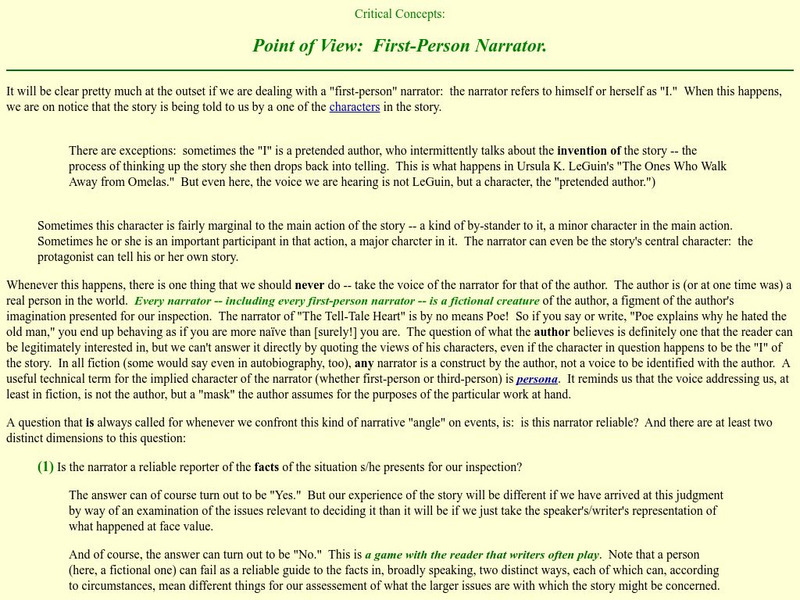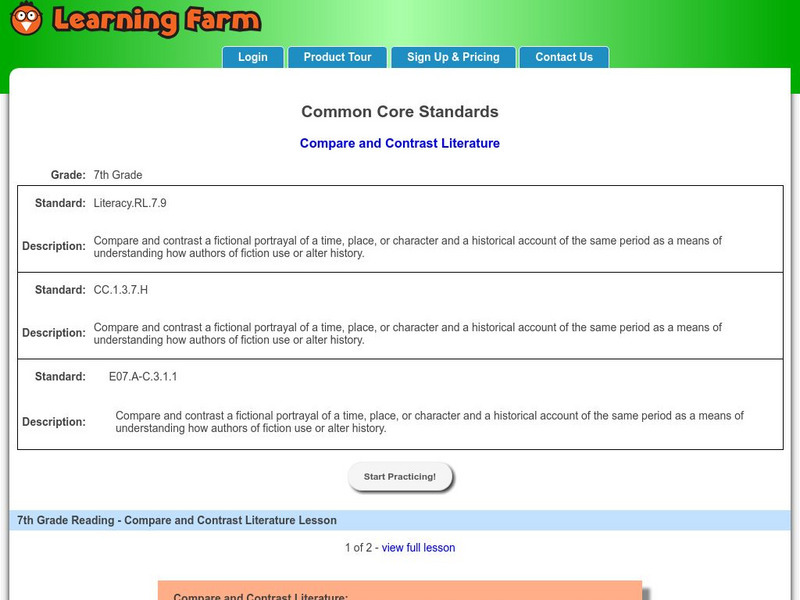McGraw Hill
Mc Graw Hill:informational Text: Analyze Development of Text Elements:individuals
Read an informational piece, and learn how to analyze the development of individuals in the text. Includes practice exercises.
McGraw Hill
Mc Graw Hill: Informational Text: Analyze Development of Text Elements: Events
Read an informational piece, and learn how to analyze the development of an event in the text.
Polk Brothers Foundation Center for Urban Education at DePaul University
De Paul University: Center for Urban Education: Compare Info in a Video and an Article [Pdf]
This Center for Urban Education resource provides a downloadable graphic organizer designed for comparing a video and an article about the same topic.
Alabama Learning Exchange
Alex: Grammar and Literature Through Digital Storytelling
In this lesson students create digital stories in cooperative groups using multimedia tools to demonstrate comprehension of the elements of grammar, literature, and technology introduced in the lesson. Students become actively involved...
Other
Interacting Texts Directed Activities Related to Texts (Darts)
Want to improve your students' reading skills? This is a good place to find the types of directed activities, using a definition text, reconstruction/analysis activities, and advantages of using DARTs.
ReadWriteThink
Read Write Think: Reading and Analyzing Multigenre Texts
This lesson plan deals with the process of analyzing a variety of literary texts from poetry and letters to diary entries and works of fiction. Included in the lesson plan is an overview, practice, objectives, resources, preparation, and...
Other
English Companion: Reading Expository Text
Taken from "Reading Reminders: Tools, Tips, and Techmiques," the information on this website provides advice on how to read, understand, analyze, and write expository texts.
Curated OER
Mc Graw Hill: Informational Text: Compare and Contrast Authors' Presentations
Learn how informational text can be written from different points of view. Includes model texts with practice exercises.
ReadWriteThink
Read Write Think: Character, Conflict, Resolution, Setting
This interactive lesson allows students to study and analyze the text concepts of character, conflict, resolution, and setting in a "Broadcast news," format.
Other
Prezi: Informational Text (Text Structures)
Slideshow introduces the concept of informational text or text structure.
Sophia Learning
Sophia: Comparing and Contrasting Texts
Two PowerPoint presentations and a video [2:57] on comparing and contrasting literary and informational texts as well as how to write a literary analysis. Includes links to external resources.
Sophia Learning
Sophia: Connecting With Reading
A brief slideshow that identifies and defines the ways that readers can make connections while reading a text (Text to Self, Text to Text and Text to World) and instructions about annotating while reading. Includes a worksheet that...
ReadWriteThink
Read Write Think: Text Features: Non Fiction [Pdf]
Compare the printed page to an electronic web page and use this activity to discuss the similarities and differences. A cross-curricular tie-in with ecosystems. Could easily be adapted to another subject area.
ReadWriteThink
Read Write Think: Compare/contrast Electronic Text With Traditionally Printed Text
Lesson allows for middle school learners who are familiar with researching electronic sources to gain a deeper understanding of the benefits of online resources versus traditional print.
Texas Education Agency
Texas Gateway: Compare/contrast Themes and Genres in Literary Texts
You will learn how to analyze, make inferences, and draw conclusions about theme and genre in different cultural, historical, and contemporary contexts and provide evidence from the text to support your understanding.
Texas Education Agency
Texas Gateway: Literary Nonfiction
Learn how to analyze literary nonfiction, particularly speeches, by making inferences and drawing conclusions based on evidence in the text.
Texas Education Agency
Texas Gateway: Compare Narrative and Informational Texts: Practice 1
Evaluate changes in audience, purpose, and tone in two different texts.
Scholastic
Scholastic: Informational Text: Reading Response: Cause and Effect [Pdf]
This graphic organizer can be used as a reading response when working with informational text. Students will write two different effects and record multiple causes for each effect.
CommonLit
Common Lit: How the News Media Works
A learning module that begins with "How the News Media Works" by Jessica McBirney, accompanied by guided reading questions, assessment questions, and discussion questions. The text can be printed as a PDF or assigned online through free...
Other
Ksu: Point of View: First Person Narrator
This tutorial surveys the uses and limitations of first-person narration in literature. CCSS.ELA-Literacy.CCRA.R.9
Other
Learning Farm: Compare and Contrast Informational Texts
In this narrated tutorial, students are presented with information about first and third points of view, then read two passages about the same event and answer questions that compare how the topic is presented. After completing the...
Other
Sas: Exploring Ways Authors Use Text Structures to Convey Meaning
In this lesson plan, students will explore ways authors use text structures to convey meaning through cause and effect, sequencing, comparison, and more.
International Literacy Association
Ila: Unlocking the Power of Informational Text With Five Creative Ideas
Five easy ways to help unlock the power of informational text for all students.
Learning Farm
Learning Farm: Compare and Contrast Literature
Students will learn how to compare and contrast passages from different time periods. Analyzing the similarities and differences of in the way authors show a historical time, place, or a character gives the reader a broader understanding...


![De Paul University: Center for Urban Education: Compare Info in a Video and an Article [Pdf] Graphic De Paul University: Center for Urban Education: Compare Info in a Video and an Article [Pdf] Graphic](https://static.lp.lexp.cloud/images/attachment_defaults/resource/large/FPO-knovation.png)
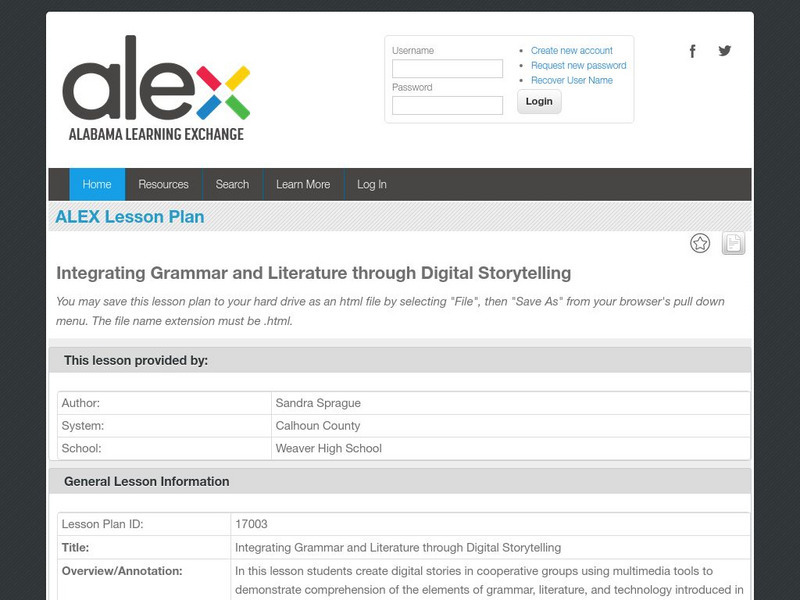
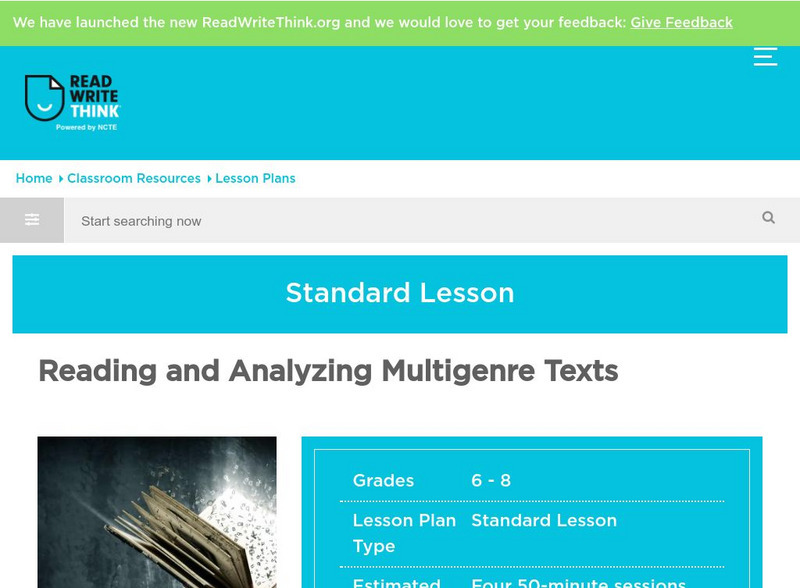




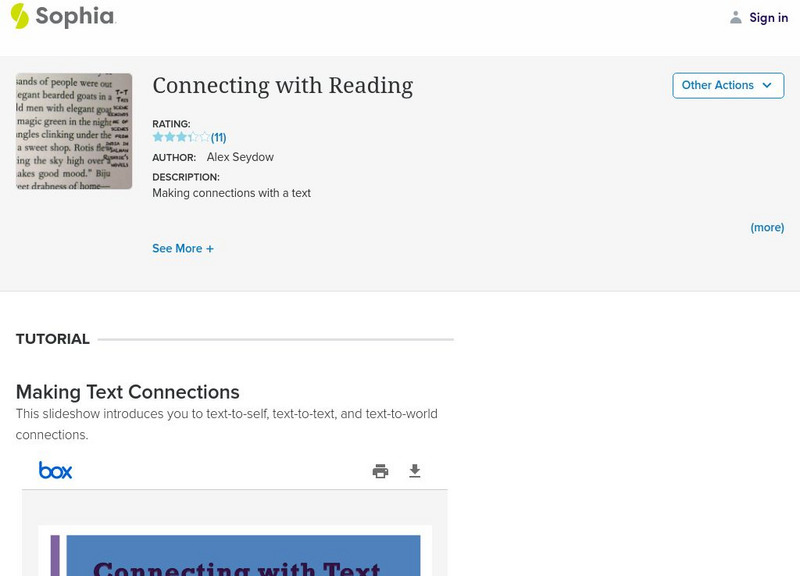
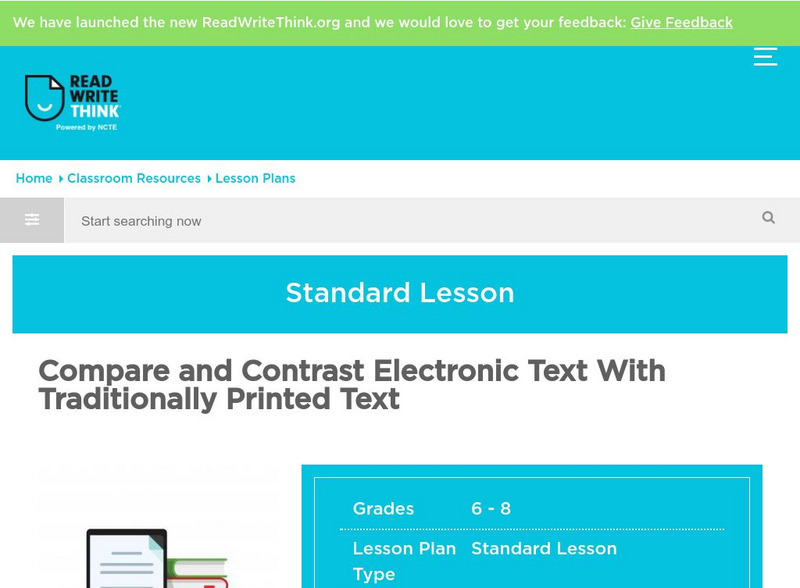

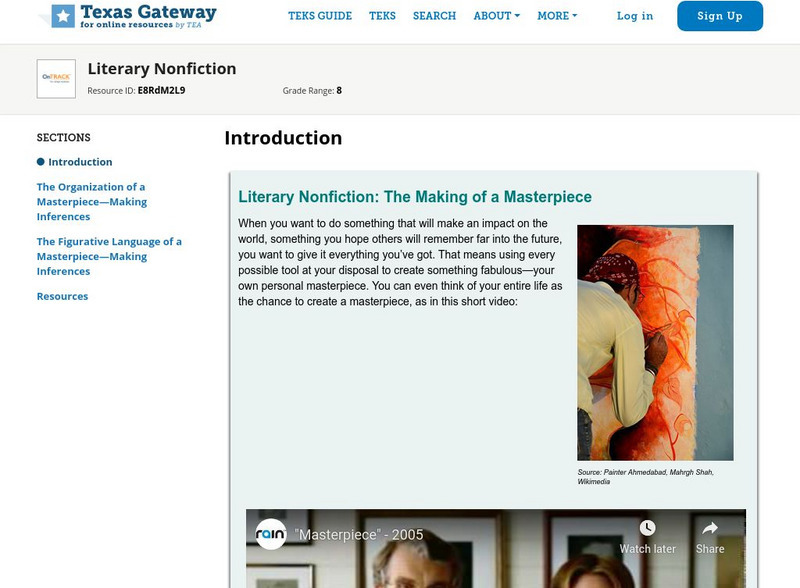

![Scholastic: Informational Text: Reading Response: Cause and Effect [Pdf] Graphic Scholastic: Informational Text: Reading Response: Cause and Effect [Pdf] Graphic](https://content.lessonplanet.com/knovation/original/362057-df6bdead3be3f2e4ac48ce2bbdb8424d.jpg?1661510819)
